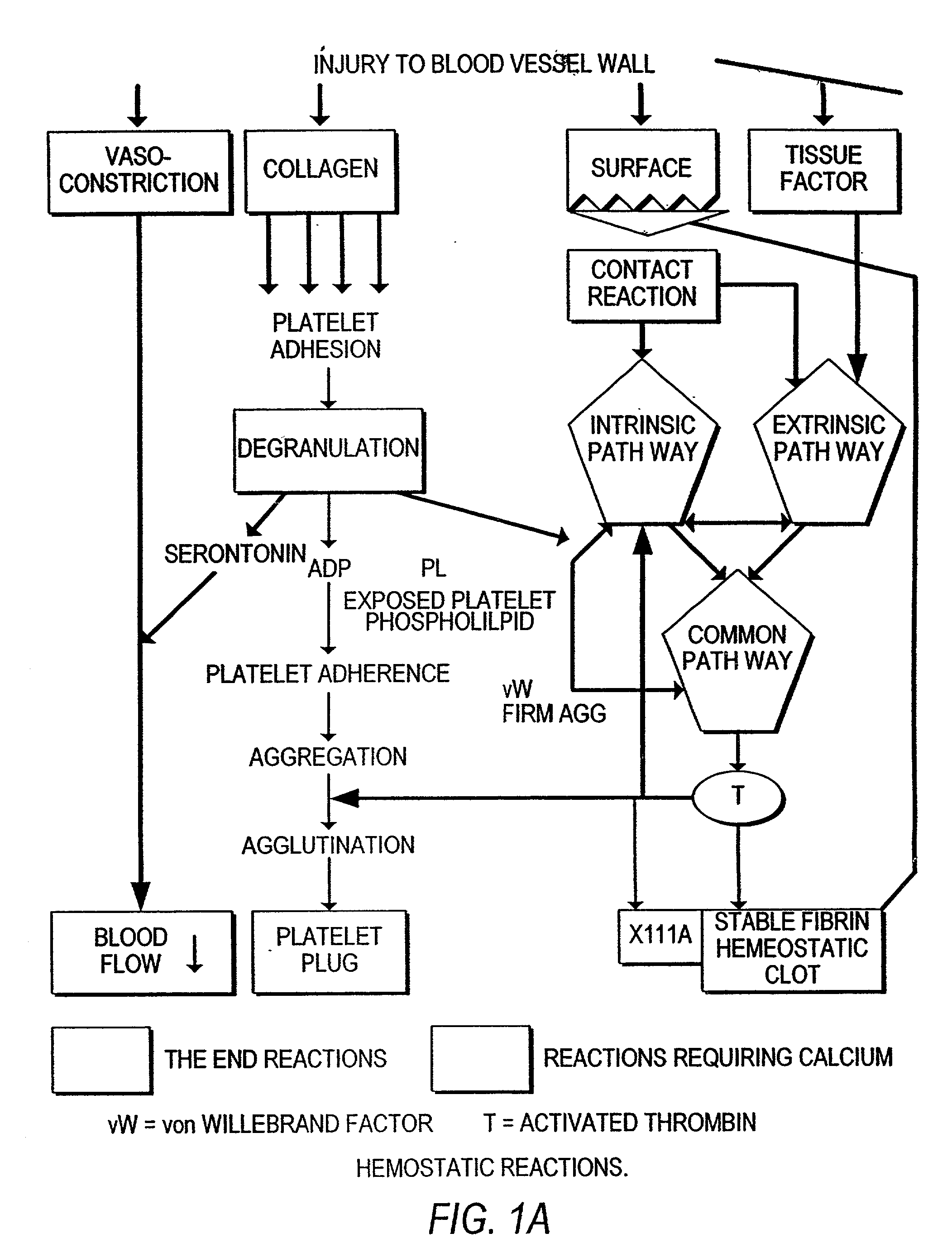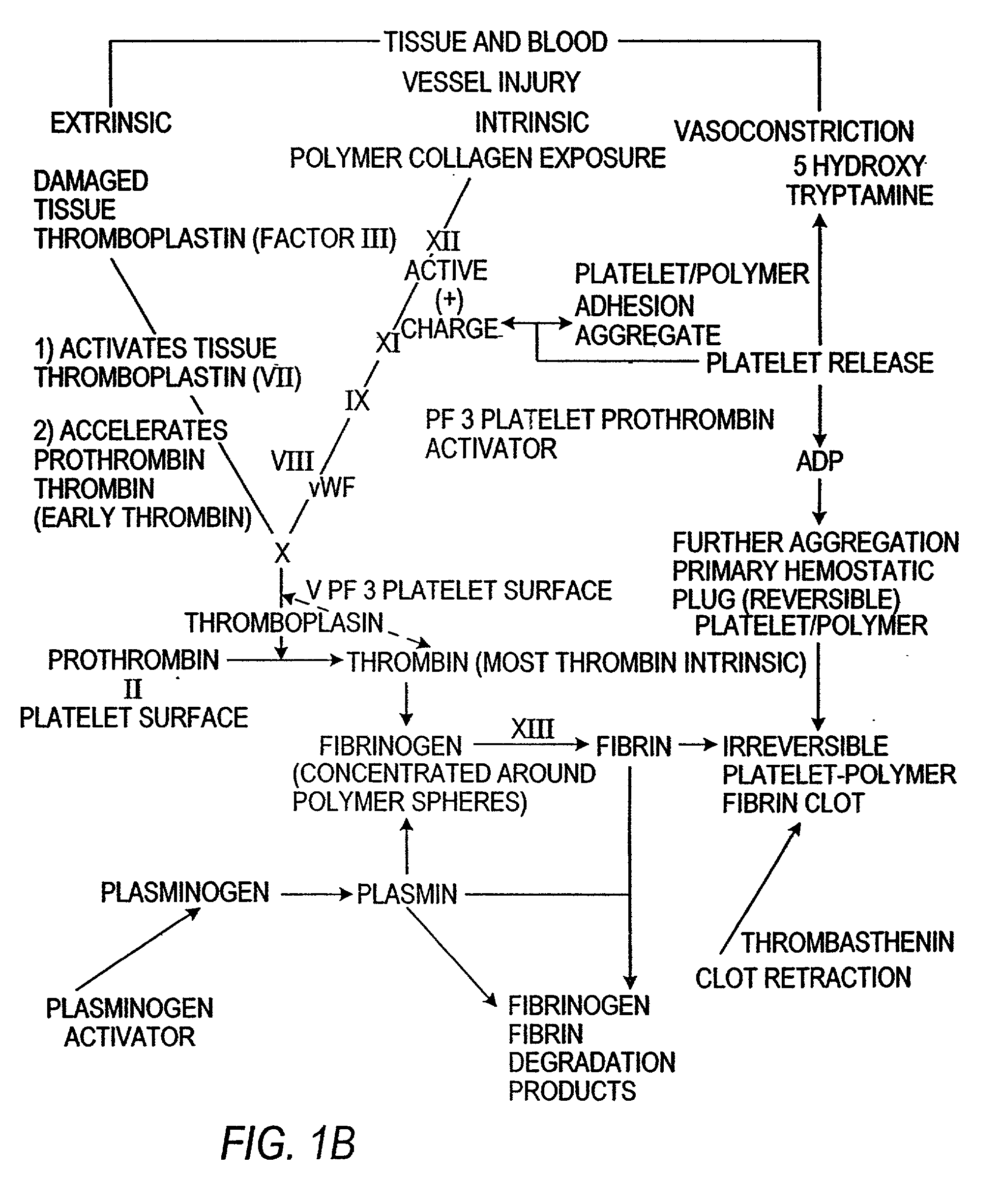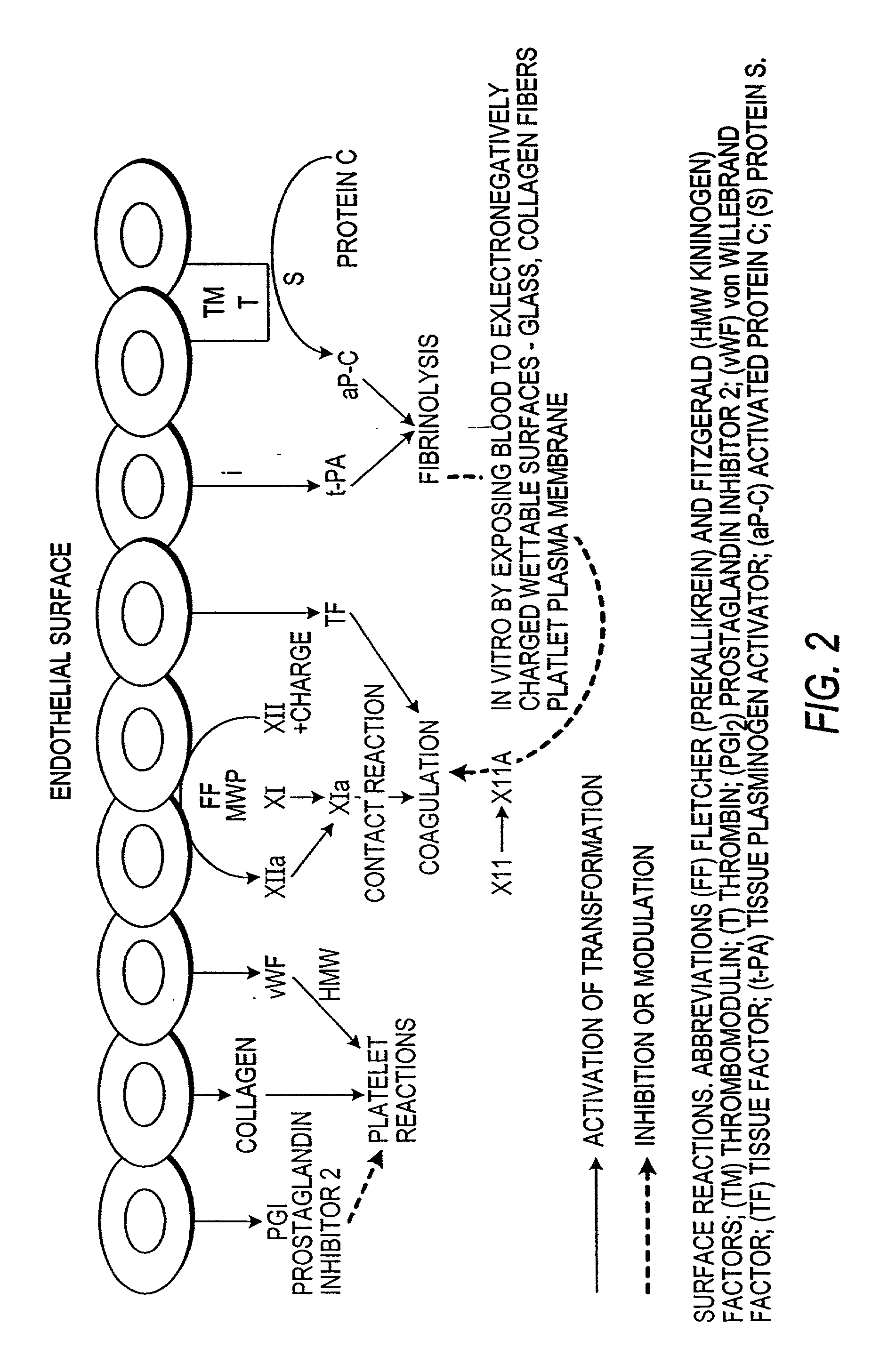Hemostatic polymer useful for rapid blood coagulation and hemostasis
a technology of hemostasis and hemostasis, which is applied in the field of hemostasis polymer, can solve the problems of traumatic insult to the integrity of the tissue, hampered subsequent further wound repair, and difficulty in controlling bleeding, and achieves rapid hemostasis and blood coagulation.
- Summary
- Abstract
- Description
- Claims
- Application Information
AI Technical Summary
Benefits of technology
Problems solved by technology
Method used
Image
Examples
example 2
Reduction in Clotting Time by the Hemostatic Agent
[0232] Dry spheres or beads were prepared by cross-linking dextran (MW 65,000-70,000) with epichlorohydrin. The resulting crossed-linked dextrans had a exclusion limit of 300,000 MW. Ten mls of sheep blood was drawn. One and a half mls of sheep blood was added to 5 tubes. Tube #1 served as the control containing citrated sheep blood only. Wet cross-linked dextran (0.01 grams+0.5 ml saline) was added to tube #2. Wet crossed-linked dextran (0.01 grams+1.0 ml saline) was added to tube #3. Dry crossed-linked dextran (0.01 grams) was added to tube #4. Dry Pharmacia Dextran T70 (0.01 grams, non crossed-linked) was added to tube #5. The clotting test was carried out at 39.degree. C. (normal sheep body temperature). The resulting clotting times were as follows: TUBE #1=14 min; TUBE #2=5 min; TUBE #3=5 min; TUBE #4=9.5 min; TUBE #5=14 min. These results demonstrate that the crossed-linked dextran (0.01 g) activated the platelets and clotting ...
example 3
Hemostatic Effect of Cross-linked Dextran on Splenic Incision
[0233] This example illustrates the effect of the cross-linked hemostatic agent on a surgical incision of the spleen. The abdomen of a pig was surgically opened to expose the spleen. A surgical incision 6 cm long and 2 cm deep was made in the spleen. Bleeding was controlled by compression. Two grams of dry cross-linked dextran (300,000 MW exclusion limit) was placed into the incision. Hemostasis was attained by continuing the compression for 5 minutes. When the cross-linked dextran / clot was removed with forceps after 15 minutes, the spleen incision hemostasis was maintained.
example 4
Hemostatic Effect of Cross-linked Dextran on Liver Trauma
[0234] This example illustrates the effect of the cross-linked hemostatic agent on experimentally induced liver trauma. A mid-line incision was made in the abdomen of a pig exposing the liver. A surgical incision 10 cm long and 3 cm deep was made in the liver. Excessive bleeding was controlled by compression. Four grams of cross-linked dextran (300,000 MW exclusion limit) was placed into the traumatized liver. Compression was continued for 5 minutes until hemostasis was attained. When the cross-linked dextran / clot was removed with forceps after 15 minutes, the liver incision hemostasis was maintained. Twelve arteries and veins had been cut and sealed by the cross-linked dextran / clot.
PUM
| Property | Measurement | Unit |
|---|---|---|
| temperature | aaaaa | aaaaa |
| thickness | aaaaa | aaaaa |
| width | aaaaa | aaaaa |
Abstract
Description
Claims
Application Information
 Login to View More
Login to View More - R&D
- Intellectual Property
- Life Sciences
- Materials
- Tech Scout
- Unparalleled Data Quality
- Higher Quality Content
- 60% Fewer Hallucinations
Browse by: Latest US Patents, China's latest patents, Technical Efficacy Thesaurus, Application Domain, Technology Topic, Popular Technical Reports.
© 2025 PatSnap. All rights reserved.Legal|Privacy policy|Modern Slavery Act Transparency Statement|Sitemap|About US| Contact US: help@patsnap.com



